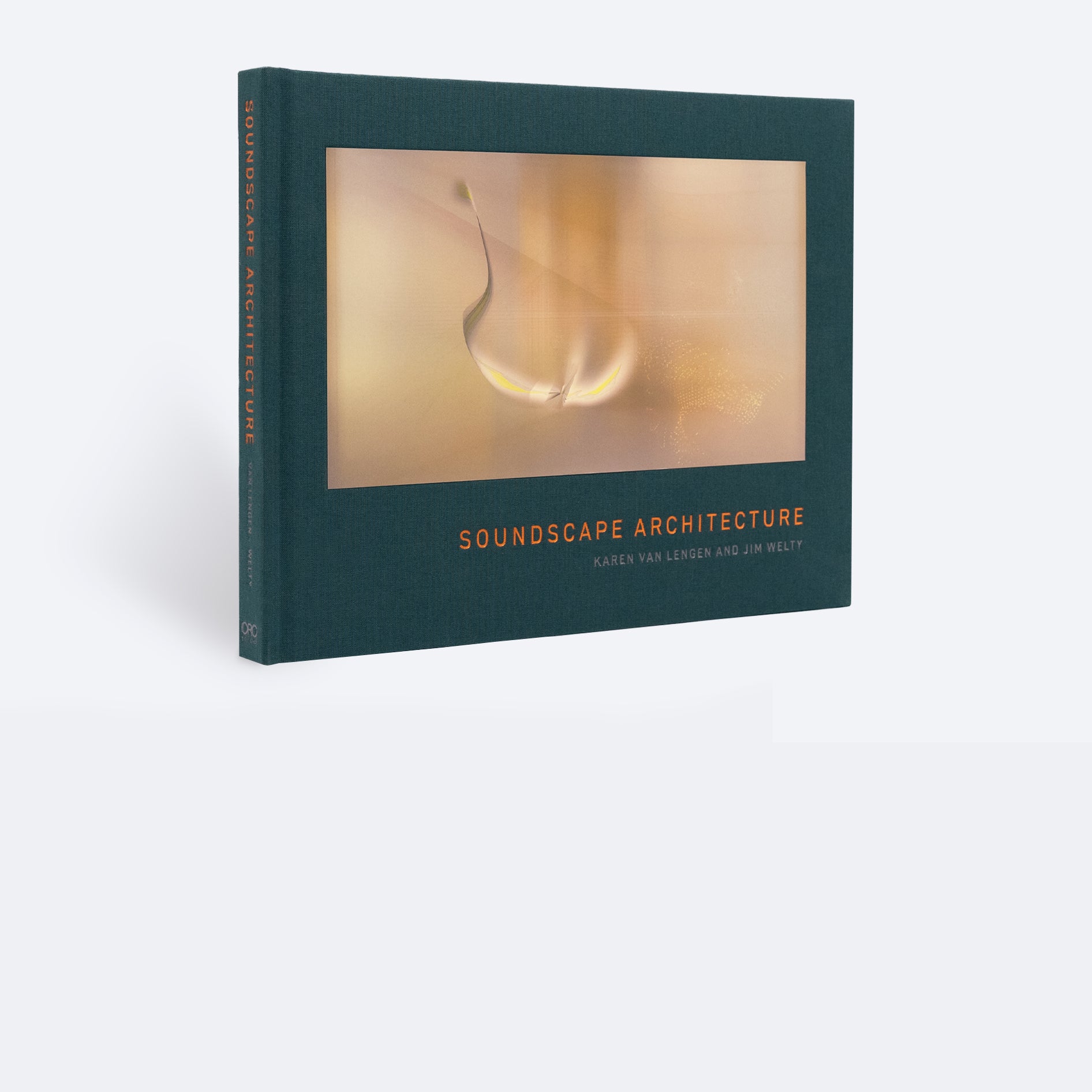
Elgin Cleckley Contributes Essay to Landmark Jacob Lawrence Retrospective
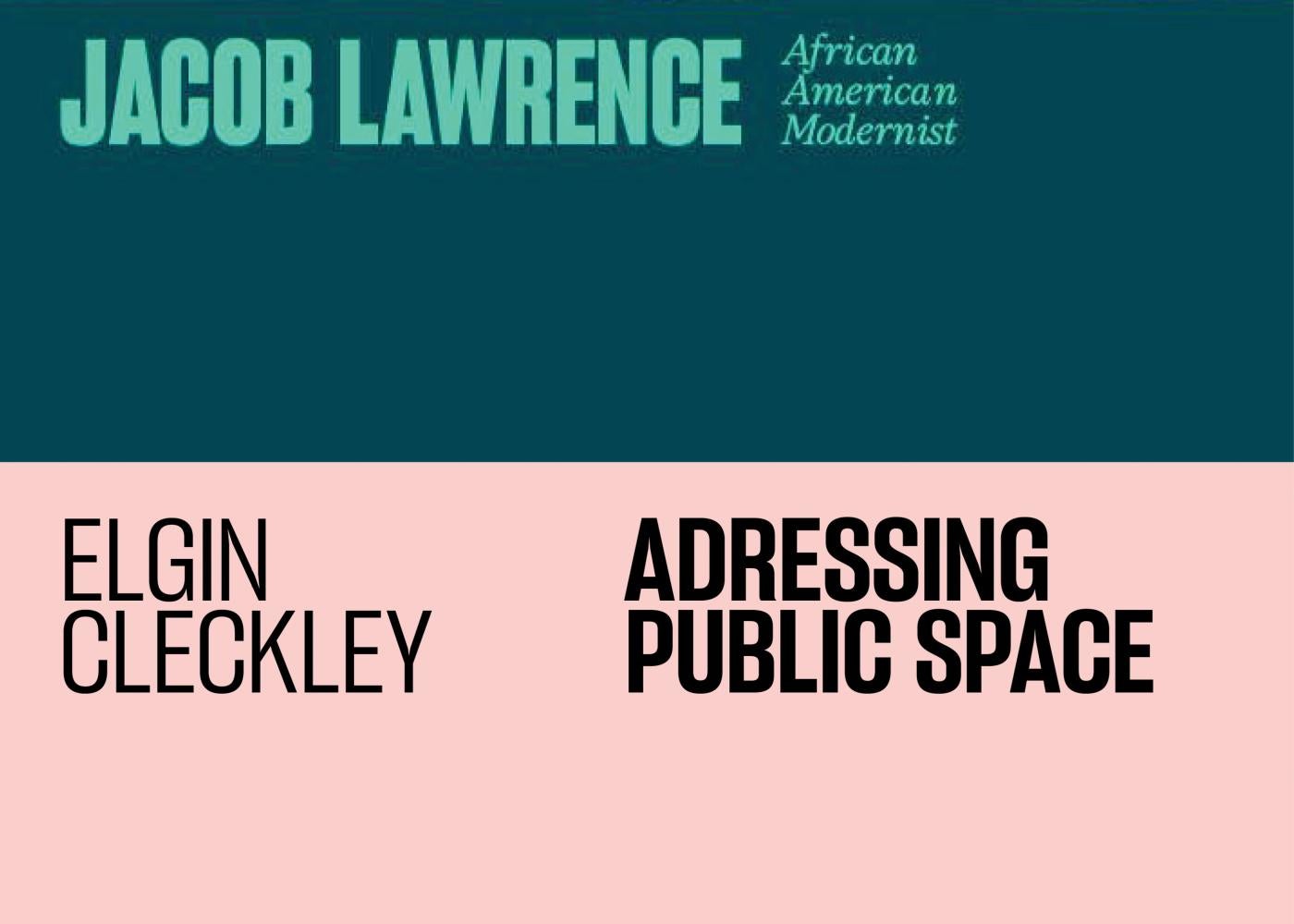
Jacob Lawrence | African American Modernist
Exhibition & Catalog
Kunsthal KAdE
Sept 27, 2025 — January 4, 2026
For the landmark exhibition and accompanying catalog Jacob Lawrence: African American Modernist organized by the Kunsthal KAdE in Amersfoort, The Netherlands, Elgin Cleckley, Associate Professor of Architecture at the University of Virginia School of Architecture, contributed the essay “Addressing Public Space,” exploring how Lawrence’s art transforms acts of seeing into acts of empathy—an approach that resonates deeply with Cleckley’s own teaching and design research. The exhibition, on view from September 27, 2025, to January 4, 2026, marks the first-ever European retrospective of the renowned twentieth-century artist’s work.
Cleckley is one of eleven contributors to the exhibition catalog, which was edited by Robbert Roos, Director of Kunsthal KAdE and curator of the exhibition. Among the contributors is Elizabeth Hutton Turner, University Professor of Art at UVA and co-curator of the traveling exhibition Jacob Lawrence: The American Struggle (2020–2021). The richly illustrated catalog also includes a graphic novel by artist Rashad Doucet and a biography of Lawrence by Romare Bearden and Harry Henderson (published posthumously), situating Lawrence’s legacy within a broader dialogue between art, history, and cultural memory.
The exhibition presents over ninety works by Jacob Lawrence (1917–2000), one of the most important American modernists whose vivid narrative paintings chronicle the experiences, struggles, and triumphs of Black Americans. With this retrospective, European audiences will encounter for the first time the full scope of Lawrence’s career and the historical figures and narratives he painted, including abolitionists Harriet Tubman and Frederick Douglass, the civil rights movement of the 1950s and 1960s, and daily life in Harlem.
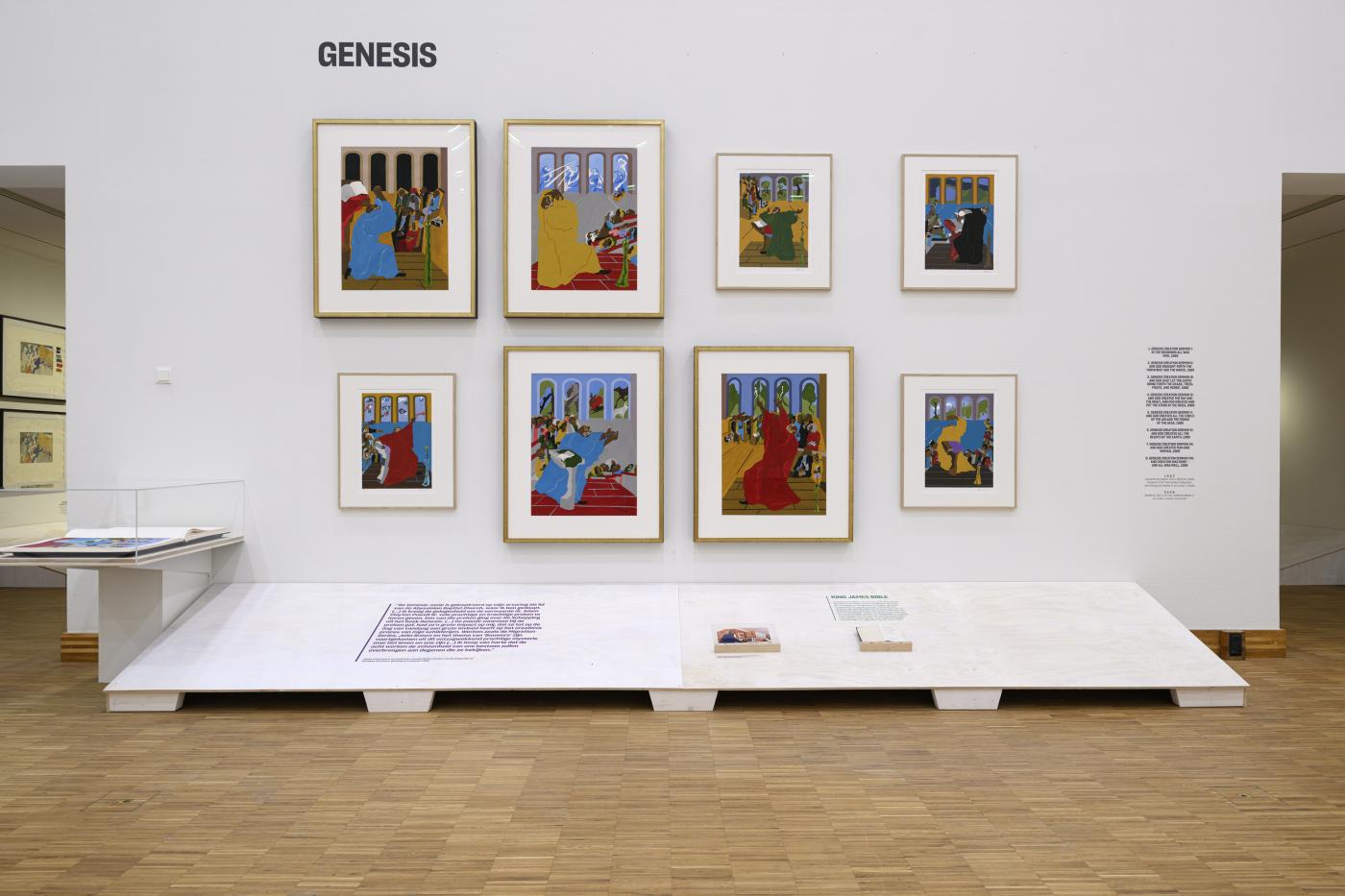
In his essay “Addressing Public Space,” Cleckley examines how Lawrence’s paintings transform acts of seeing into acts of empathy, redefining the ways viewers experience history and the built environment. Through bold color, geometric abstraction, and rhythmic composition, Lawrence invites us not simply to observe space but to feel within it.
"We look to Jacob Lawrence for many things, especially the way he visualizes human experience in the built environment in his paintings. Lawrence reminds us to see familiar streets, buildings, and infrastructure as a fabric intertwined with memories of how we occupy space. Each brushstroke is rich with threads, weaving stories that stitch a quilt of life, drawn figures of patchworked emotions."
Cleckley traces this empathic vision through key works. In Bus (1941) and Bar and Grill (1941), physical structures—windows, doors, wooden partitions—reveal how architecture encodes systems of segregation and exclusion. In Confrontation on the Bridge (1975), the 1965 Selma to Montgomery marches, and the violence of "Bloody Sunday" on the Edmund Pettus Bridge are rendered not through documentary realism but through abstraction and color that express collective fear and courage.
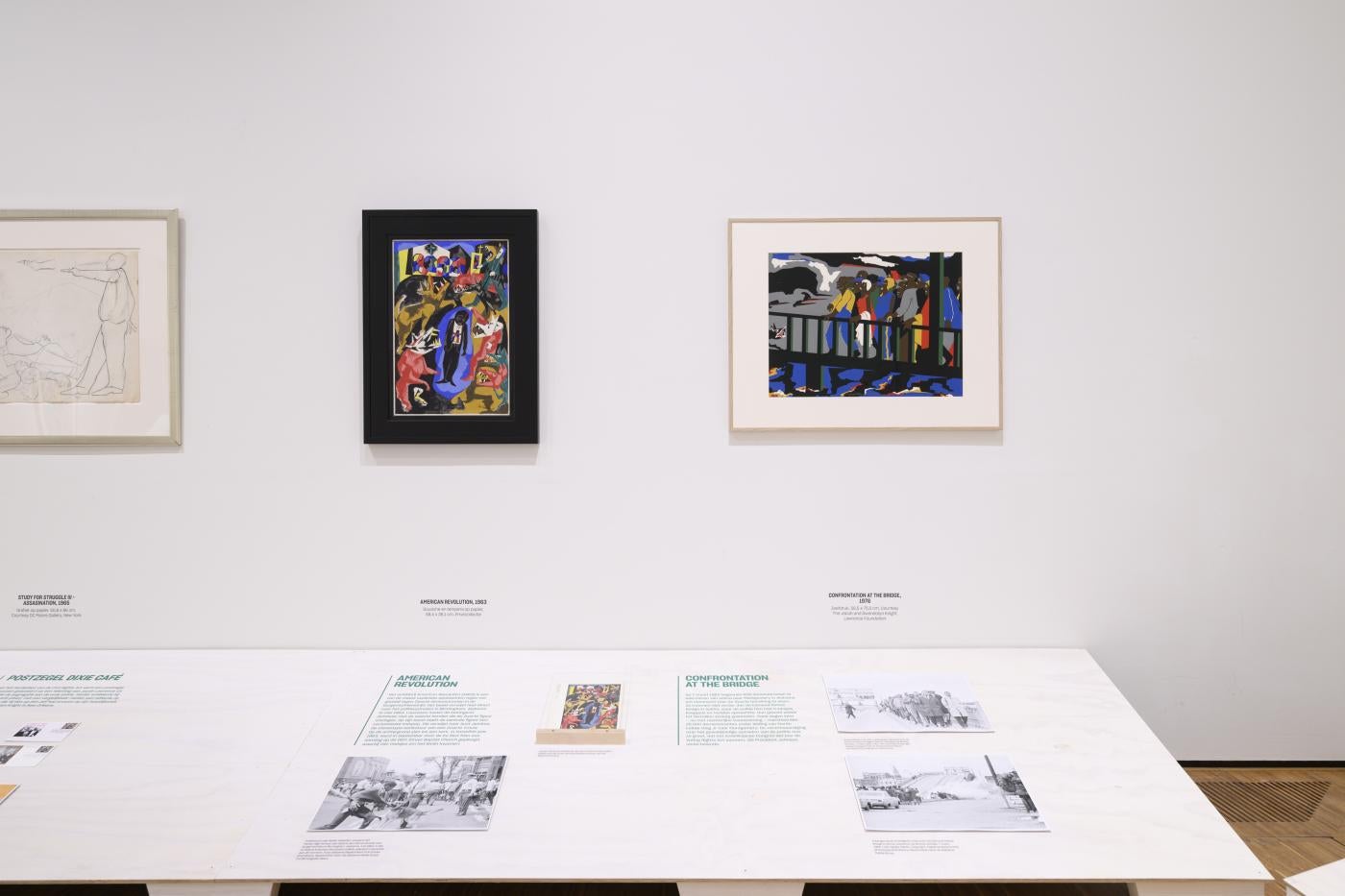
Lawrence’s use of abstraction, Cleckley writes, becomes an “empathy portal,” enabling viewers to inhabit the emotional world of his figures. Drawing from the philosophical concept of Einfühlung—“feeling into”—Cleckley redefines Lawrence’s practice as visual empathy, a form of shared emotional and spatial understanding that transcends individual identity and historical distance.
Cleckley extends this analysis to Lawrence’s later public works, including Community (1986, study for a mural in Jamaica, NY) and New York In Transit (2001), the artist’s final mural for the Times Square–42nd Street subway station. He describes how these works transform the urban landscape into a shared emotional terrain—where commuters, color, and light form an evolving narrative of inclusion and belonging.
In Munich Olympic Games (1971), Cleckley observes Lawrence condensing athletic movement, civil rights history, and the legacy of Black excellence into a single visual field. The painting, he writes, connects Jesse Owens’s triumph in 1936 to the courage of Tommie Smith and John Carlos in 1968, creating a “social, emotional, and spatial catalyst” that embodies resilience and collective will.
Cleckley closes his essay with a reflection that bridges Lawrence’s artistic vision with his own commitment to empathy in design:
"May Jacob Lawrence’s visual empathy feel with you, giving you comfort, support, and encouragement to repair and weave the fabric of our futures as you enjoy this exhibition, or when you encounter the incredible work in the built environment."
Through his contribution, Cleckley deepens the catalog’s invitation to see Lawrence not only as a painter of history, but as a shaper of space—an artist whose visual language continues to guide how we might inhabit our shared environments with greater awareness, connection, and care.
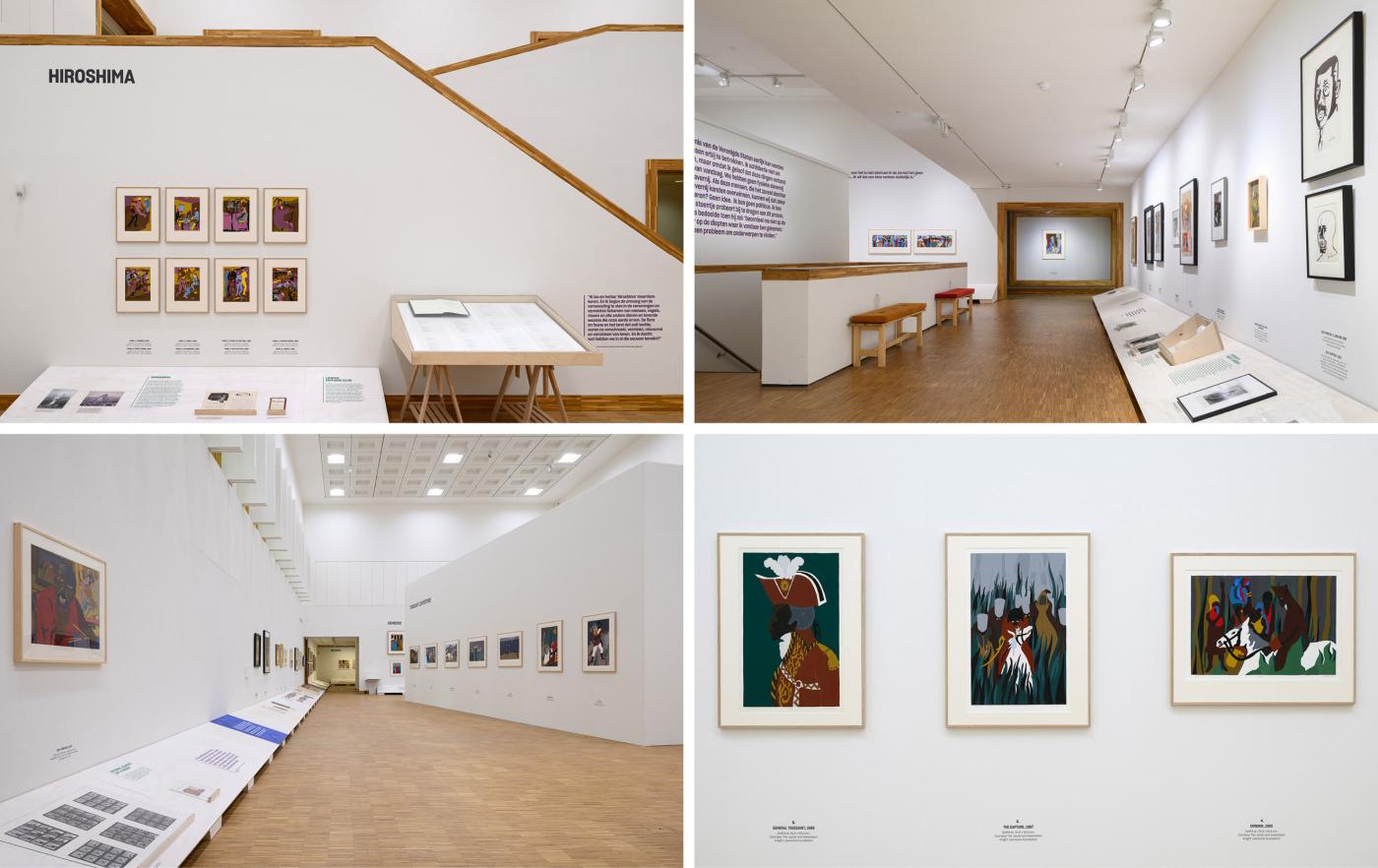
About Elgin Cleckley
Elgin Cleckley, NOMA, is Associate Professor of Architecture and Undergraduate Program Director at the University of Virginia School of Architecture. He leads _mpathic design, a multi-award-winning pedagogy initiative and professional practice. Cleckley’s research and creative work have been recognized through national awards, fellowships, and international exhibitions, including Brookes (Revisited) and the publication Empathic Design: Perspectives on Creating Inclusive Spaces. In 2022, Cleckley and his undergraduate and graduate students received an Association of Collegiate Schools of Architecture Award for a design studio based on Jacob Lawrence's Great Migration series.


